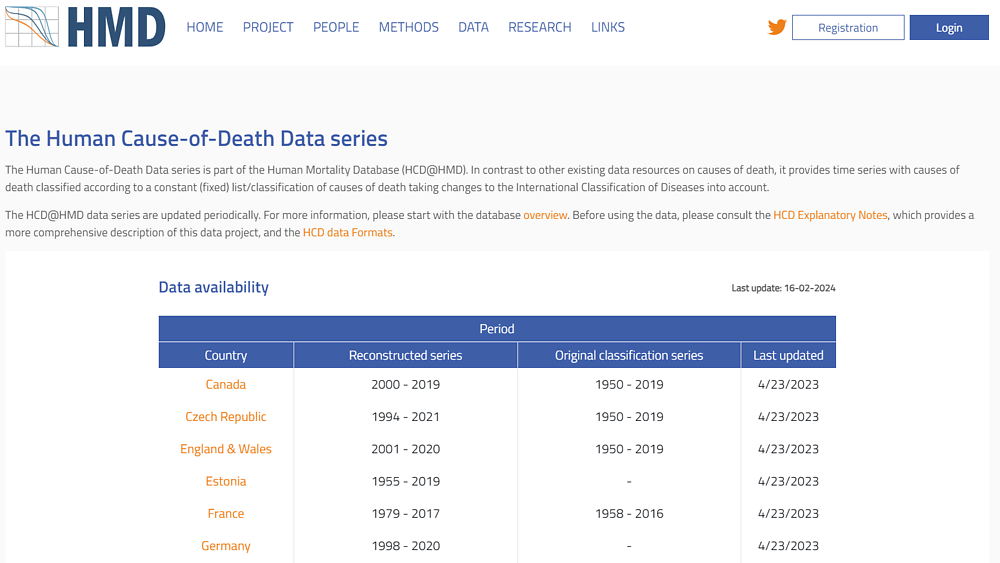April 05, 2024 | News
Update of the Human Mortality Database
Our flagship project, the Human Mortality Database, has received a major update with the release of cause-specific data series. This is the first major expansion since the addition of short-term mortality fluctuation data in 2020.

© MPIDR
The Human Mortality Database (HMD) is the world's leading scientific resource on mortality in developed countries. It is a joint project of the Max Planck Institute for Demographic Research (MPIDR), the University of California, Berkeley, and L’Institut national d’études démographiques (Ined).
In its latest development, cause-of-death data have been integrated into the database to give users immediate access to all mortality data, including medical causes of death. These data are essential for demographic, epidemiological and public health research. For many years, the WHO Mortality Database has been the primary source of data on causes of death. The WHO database provides death counts classified according to the International Classification of Diseases (ICD) at the time the data were collected. Thus, cause-of-death time series can be strongly affected by periodic changes in disease classifications. Eurostat series are more consistent over time because data are provided only for a short list of (65) broad categories of causes of death. But these data are available only for relatively short periods (from 1994 at best) and do not allow analysis of detailed causes of death. In addition, all available cause-specific mortality datasets pay little attention to the consistency of population statistics (all-cause mortality, population exposures, quality of age estimates, etc.). The Human Cause-of-Death Data series at the HMD (HCD@HMD) addresses all these issues and follows the main principles of the HMD:
- comparability,
- flexibility,
- accessibility,
- and reproducibility.
In particular, the HCD@HMD contains only high-quality data that can be used for research without additional manipulation. For example, although the original series of vital statistics in each country are based on the current classifications of causes of death, all data series have been reconstructed according to the latest version of the classification in use. HCD@HMD is largely based on data from the Human Cause-of-Death Database (HCD). The original HCD was built on the foundation of long-term research conducted at INED by Jacques Vallin and France Meslé. These two researchers were the first to attempt to reconstruct coherent historical time series of deaths by cause.
Currently, cause of death data for 16 countries are available in HCD@HMD (out of 47 HMD data series). In addition, the database includes two countries (Moldova and Romania) that are not currently included in the core HMD collection, but we hope to include them soon. For several of the countries with data available in the HMD, reconstruction is either underway or has not yet begun. For these countries, the series published in the database are only available for the period covered by the latest ICD revision (ICD-10) until reconstruction is completed/implemented. We also plan to add more causes of death series in the future by extending back some of the available series or by adding new country series. The published series will be updated on a regular basis.
All HMD data, including HCD@HMD, are freely available to everyone and are published under a CC-BY 4.0 license.